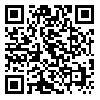BibTeX | RIS | EndNote | Medlars | ProCite | Reference Manager | RefWorks
Send citation to:
URL: http://journal.zums.ac.ir/article-1-1889-fa.html
Background and Objective: Salmonella spp. are enteric pathogens with a worldwide distribution comprising a large number of serovars characterized by different hosts and distribution. Among Salmonella spp., the number of infections and diseases caused by the serotype Salmonella enterica serovar Infantis started to increase significantly in the last decade. The aim of this study was to investigate the genetic diversity of the clinical stains of Salmonella enterica serovar Infantis isolated in Tehran, Iran by using the Ribotyping method. Materials and Methods: In this descriptive study from November 2007 to December 2010, clinical samples, collected from different hospitals in Tehran, were investigated for detection of Salmonella enterica serovar Infantis. Bacterial isolation and identification was achieved through biochemical and bacteriological methods. The Ribotyping technique was applied for the molecular typing of the strain of Salmonella enterica serovar Infantis. Results: Out of the 26 Salmonella serogroup C samples isolated in this study, 19 strains (73%) belonged to Salmonella enterica serotype Infantis. Ribotyping results divided Salmonella enterica serovar Infantis stains into 9 clusters (1c to 9c). The majority (7) of the strains belonged to cluster 1c. Conclusion: The results obtained from the Ribotyping patterns indicate that Salmonella enterica serovar Infantis strains, circulating among the patients in Tehran, belong to a diverse number of clones. Moreover, our data show that Ribotyping is an appropriate method for the molecular typing of Salmonella enterica serovar Infantis strains.
دریافت: 1391/6/6 | پذیرش: 1393/3/31 | انتشار: 1393/3/31
| بازنشر اطلاعات | |
 |
این مقاله تحت شرایط Creative Commons Attribution-NonCommercial 4.0 International License قابل بازنشر است. |




